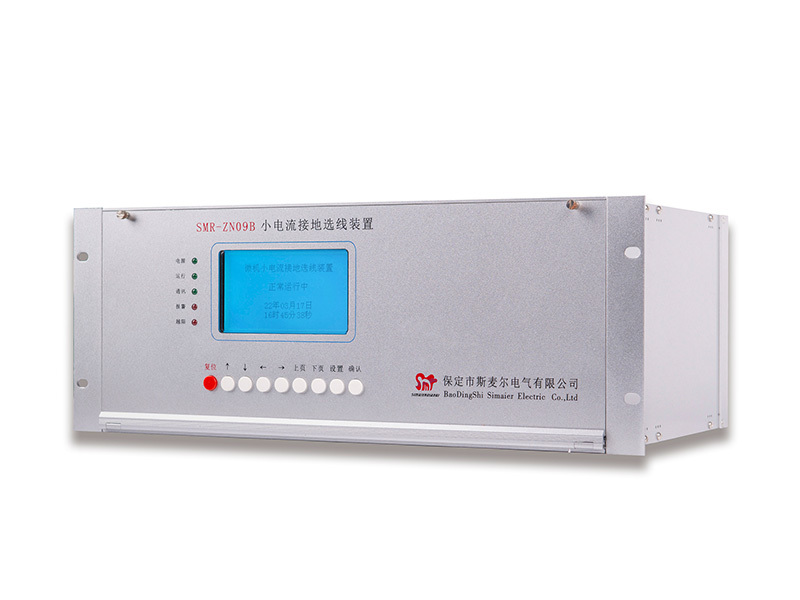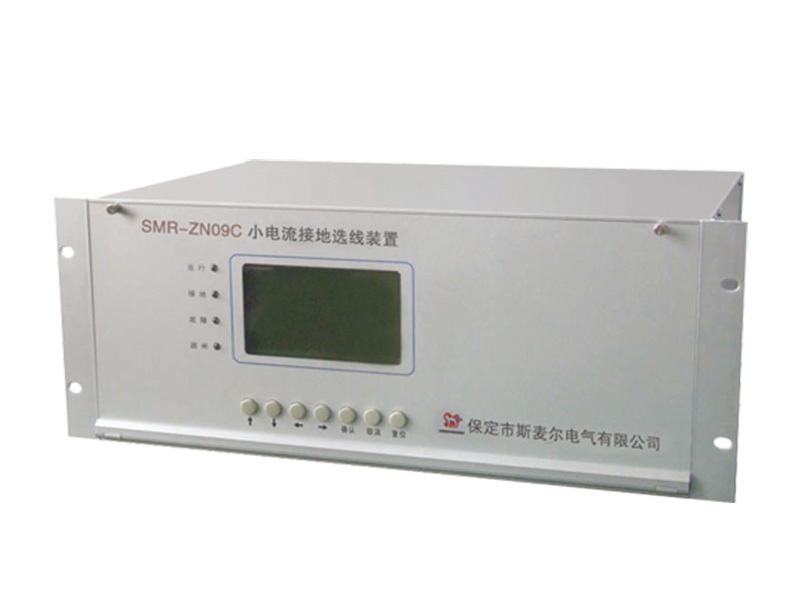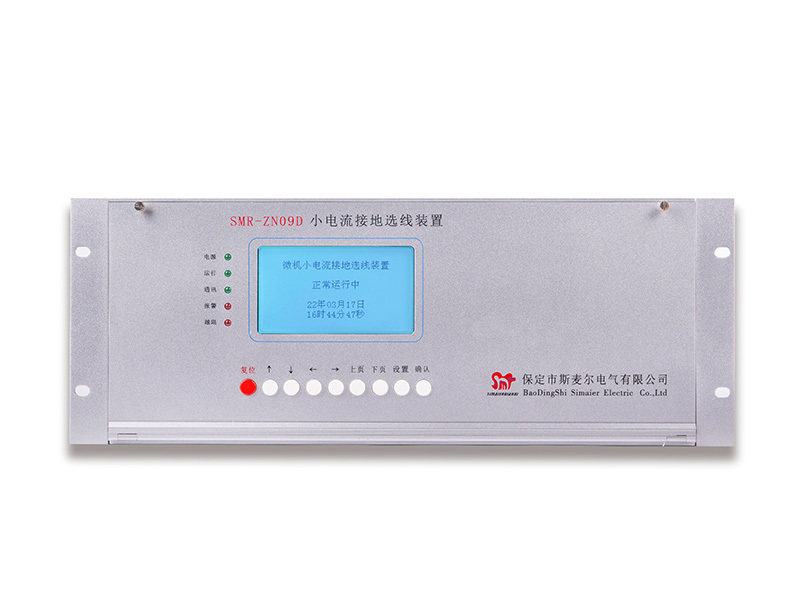Contact Us
Mobile:+86 15203128120
E-mail:bdsmrdq@163.com
Address: Building 2, Building 14, Baoding Gaoxin Dizhigu, 3099 Xiangyang North Street, Gaokai District, Baoding City, Hebei Province,China

SMR-ZN09ICM Industrial Control Machine Small Current Grounding Selection Device
- Description
-
1. Product Overview
Operating System: Real-time LINUX + RTOS. It uses real-time LINUX + RTOS (RTOS, Real-time operating system), meeting the requirements of the State Grid/Southern Grid for the operating system of line selection devices, while also considering the requirements for system stability, safety, and real-time performance.
Hardware Foundation: Big Data + Strong Computing Power. It uses large-scale FPGA to achieve 84 channels, synchronously sampling 16-bit AD, with a sampling frequency of 50KPPS, providing a reliable data foundation for grounding and related fault processing; high-performance multi-core heterogeneous processors (dual floating-point DSP C66x + dual ARM), high speed (DSP: 750 MHz; ARM: 1500MHz), equipped with large-capacity high-speed memory to ensure computing power for data processing.
High Line Selection Accuracy: Based on big data + strong computing power, it employs steady-state algorithms + transient algorithms, line selection learning algorithms, combined with effective domain line selection technology, verified using the "physical prototype experimental system," capable of accurately identifying various complex grounding fault types such as metallic grounding, transitional resistance grounding less than 8000 ohms, and intermittent arc grounding.
Complete Line Selection Protection Logic: The device is designed with a complete grounding fault processing logic, achieving accurate identification of instantaneous faults, rapid isolation of permanent faults, and quick restoration of power supply for non-fault lines.
Powerful Functions: Line selection function, trip (close) function, post-acceleration trip, round-robin (leakage test) function, dual-channel protection, phase judgment, PT disconnection judgment, fault recording, fault statistical analysis.
Scalability: The hardware design of the device has reserved capacity for expanding control functions, enabling the implementation of active line selection schemes similar to "parallel resistors for arc suppression coils."
2. Product Features
Line Selection Function: The device has a grounding line selection function. When a single-phase grounding occurs in the system, the device can make accurate judgments based on the collected signals, selecting the fault line, displaying the grounding line and bus name (number), and automatically reverting after the grounding disappears.
Trip (Close) Function: The device has a grounding protection trip (close) function, which can be integrated into the protection trip (close) circuit. The trip (close) function's activation and delay can be independently set for different lines.
Round-Robin Function: The device has a round-robin function, which can be directly activated according to the device settings in sequence after a line selection trip fails, until the fault line is cut off, ensuring the accuracy of line selection. When the protection sensitivity is insufficient (line selection protection setting > 3U0 > round-robin setting), the round-robin function can be activated with a delay (long-time round-robin). This function can be activated or deactivated, and the delay can be set; whether each line participates in the round-robin can be independently set. The round-robin (leakage test) strategy can be set, with both fixed and automatic round-robin modes.
Post-Acceleration Trip Function: The device has a post-acceleration trip function. When the line selection trip is successful but coincides with a permanent fault (if the line is re-closed), the device can accelerate the trip to cut off the fault line; this function can be activated or deactivated.
Phase Judgment Function: The device has a single-phase grounding fault phase judgment function, capable of accurately identifying the grounding fault phase.
PT Disconnection Judgment Function: The device has a PT disconnection judgment function, capable of distinguishing between primary and secondary PT disconnections. It can set line selection strategies under disconnection conditions.
Ferromagnetic Resonance Alarm Function: The device has a ferromagnetic resonance alarm function. When ferromagnetic resonance occurs in the system, the device can accurately identify it and issue a ferromagnetic resonance alarm signal.
Fault Statistics Function: The device has the capability to statistically count the number of instantaneous and permanent groundings for each line, providing a basis for analyzing the operating status of the lines.
Adaptive Operating Condition Function: The device can make judgments based on changes in on-site operating conditions, such as changes in the positions of sectional switches and interconnection switches in ring network structures, ensuring the correct operation of the line selection device.
Self-Check Function: The device has an online automatic detection function. During normal operation, if a single electronic component in the device fails (excluding the export relay), it will issue an abnormal signal without misoperation.
Fault Recording Function: The device has a fault recording function. When a single-phase grounding fault occurs in the system, it records data 80ms before and 120ms after the fault occurs, as well as data 80ms before and 120ms after the first line selection trip. The recording resolution is 120 points per cycle; the recording file format uses the standard COMTRADE99 format, supporting extraction of recording files via Ethernet and debugging interfaces.
Communication Function: The device adopts standards compliant with DL/T 860 substation communication networks and systems (IEC 61850), and the "Relay Protection Information System Master-Substation DL/T860 Engineering Implementation Specification" for communication with substation automation systems and remote devices.
Time Synchronization Function: The device has a time synchronization function (including B-code synchronization and network synchronization), with an error not exceeding 1 millisecond. If all time synchronization signals disappear, the device will use its own clock, with a 24-hour error not exceeding ±5 seconds. In the case of power failure, the internal clock chip of the device can continue to operate.
Fault Simulation Function: The device can simulate the output of single-phase grounding alarm signals, trip (close) relay signals, and communication soft message outputs, facilitating joint debugging tests.
Dual-Channel Protection Function: The device's zero-sequence voltage sampling circuit uses dual A/D or dual-channel structure to avoid misoperation of the device due to the failure of a single A/D.
Key words:
Online Inquiry










